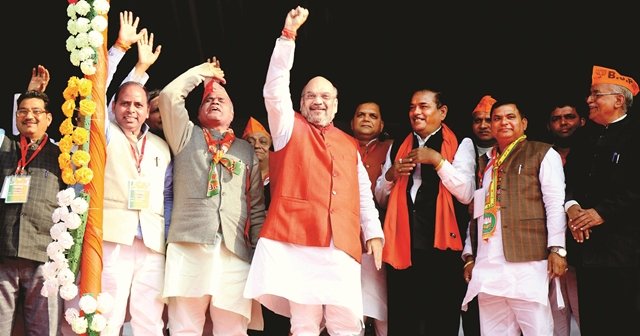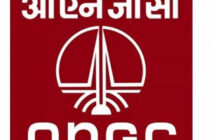Amit Shah is now running BJP completely like a Corporate or Joint Stock Company, where everything is being done with an objective and each and every person has been made accountable for the responsibility he has been entrusted to. Amit Shah as a politician is so ‘passionate’ (some may call it obsessed) about winning elections that he sometimes gives you an impression of a stockbroker who knows fully well when to buy a particular stock and when to dispose it off on the basis of “fundamental analysis” and meticulously putting that acumen into winning elections by picking right kind of winning candidates and discounting cast equation on the ground just as PE (price to earning) ratio on every constituency, Explains Amit Bhanot in the Cover Story of Governance Democracy&Politics (GDP), April Issue
Amit Shah has emerged as India’s unchallenged master strategist (some call him the modern day Chanakya) when it comes to engineering an election victory. Recreating the 2014 super-wave, BJP won more than 300 seats in the 403-member Uttar Pradesh Assembly. That is a remarkable feat, considering the “so called” anger among party leaders in the state over ticket distribution, and among the voters over demonetisation.
Since 2014, Shah has led from the front, ensuring massive Assembly elections victories. In 2014, shortly after the BJP won its biggest Lok Sabha victory ever, the party went on to bag Haryana, Rajasthan, and Maharashtra. In 2015, Jharkhand was won. Bihar and Delhi were the two setbacks for the BJP that year. And then there was Assam, the BJP’s stunning entry into India’s north-east, where the party now has a network of political coalitions.
What makes Amit Shah so special?
In the midst of Assembly polls in Assam last year, BJP president Amit Shah spotted party office bearer from Uttar Pradesh Mahendra Singh in his campaign helicopter. “Mahendra, this election is going to be over in a week, get to Uttar Pradesh fast,” Mr. Shah said with a half smile, but a more than serious intent. That was in May 2016.
In April, Mr. Shah had appointed Phulpur MP Keshav Prasad Maurya, from a non-Yadav OBC community, and the bare bones of his long trek to win Uttar Pradesh by the biggest margin in recent times was being put in place.
The first order of business appeared to be to ensure enough boots on the ground. “We made sure that we assigned 10-21 party workers in every polling booth. With 1,47,401 booths, that meant that the total number of workers we managed to operationalise was 13,50,000, a huge number on the ground,” pointed out a member of Mr. Shah’s inner circle.
Surveys showed that there were 70 plus seats that were marginals (could be lost by small margins). “We refused to give up on them, and we now find that we have won 60 out of those 70 seats,” said a senior general secretary of the party.
The social engineering strategy too was as meticulous and maximum. The appeal to non-Yadav OBC and non-Jatav Dalits, apart from Mr. Maurya’s appointment, was made by a very generous tilt in ticket distribution. “Non-Yadav OBCs got as many as 150 ticket out of a total of 381 seats fought by the BJP. Among the 85 seats reserved for Scheduled Castes in the Assembly, we gave 64 ticket to non-Jatav Dalits. The message was clear, when it came to OBCs and EBCs, we were the party that gave hissedaari [a share],” said a source.
Through the campaign Amit Shah kept a strong grip on the narrative. As reports of Jat alienation from the BJP in western Uttar Pradesh started gaining currency, Mr. Shah made it a point to hold meetings with community leaders, allaying their fears. Union Minister Sanjeev Balyan was extensively deployed to prevent a Jat exodus from the BJP ranks.
In Meerut, when a local trader was shot in the market place, Mr. Shah cancelled his scheduled road show in the area and made an impromptu visit to the bereaved family. This is said to have made an impact in the community, upset with the BJP over demonetisation. He spent 17 nights in total in the State, through the over month-long campaign, calling up candidates, office bearers and held 150 rallies in all.
“We began preparations over a year ago, with Mr. Shah drawing up a meticulous plan. The ”Parivartan yatra” that the party undertook four months ago, went on for 192 working days, with around 10,000 small and big meetings. We crowd-sourced for suggestions for our manifesto and the Prime Minister’s leadership won the day for us,” said a party





